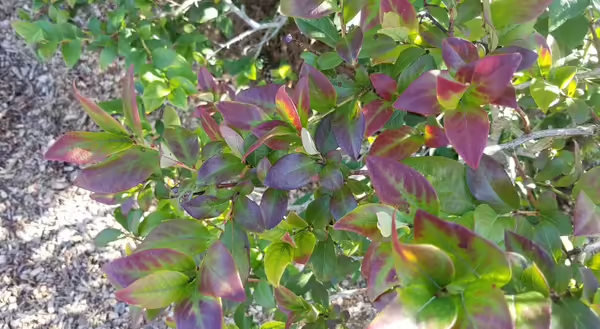
Landscaping with edible plants is my second favorite gardening themes, next to ‘Going Native’. Today, there are a wide variety of plants available that will, not only provide your family food, but also offer many other desirable attributes. In addition, it reduces your carbon footprint by growing some of your own local food.
A plant that tops my list in the category of edible landscape plants is the blueberry (Vaccinium spp.). Last fall I planted about 30 blueberry shrubs on our property, some of which are meant for production, but some were planted right into our landscaping to provide beauty as well as functionality in the way of a highly nutritious and productive home-grown fruit crop.
Most blueberries in production in the Midwest are cultivated varieties of the highbush blueberry (Vaccinium corymbosum) or a hybrids with the lowbush blueberry (Vaccinium angustifolium). Highbush blueberry is native to the eastern and southern US as well as eastern Canada (Zones 5-8) and is often found growing in or near swampy areas. Whereas the lowbush blueberry is indigenous to the northern US (Zone 2-5) occurring in sand prairies, rocky uplands, bluffs and other areas that typically have more sandy soils. In general, hybrids of the two combine the cold hardiness of lowbush blueberry with the greater production of the highbush blueberry. Surprisingly, this plant has only been in cultivation for about 100 years, with the first cultivated crop harvested here in the US in 1912.
Today, there are a great number of blueberry varieties and hybrids offering a large amount of variation in fruit traits and growth habits. In a well planned blueberry patch, with several varieties, it is possible to harvest fruit from June thru August in our area.
From an ornamental perspective, blueberries really offer 4 seasons of interest. In spring, they provide a showy display of small, white to pinkish flowers. The abundant flowers develop into blueberries themselves that are quite attractive and abundant on healthy plants. Some varieties have been developed with pink berries that offer an extra special summer attraction when coupled with the deep green leaves. Summer foliage gives way to a display of fall color matched by few other shrubs. Blueberry leaves offer the full gamut of fall color from yellow-orange, almost fire-red hues to deep purple on some varieties. In winter, the attractive red branch tips and interesting bark provide additional beauty.
Although blueberries are relatively disease and pest free once established, they do have some very specific needs that must be addressed at planting time. Like their cousins, rhododendrons and azaleas, blueberries prefer acidic soils, more acidic than our soils here in central Illinois. Soil pH needs to be lowered to 4.5-5.5, which is a dramatic difference from the average soil pH range (6.0-6.5) in natural conditions around central Illinois. Soil testing will identify your current soil pH and help you decide how much it will need to be lowered
With soil test results in hand, you can now determine how much to lower the pH in your planting area. The best soil amendment for lowering pH is elemental sulfur. This product is simply a pelleted form of the element sulfur, which is approved for organic production and can be surface applied. Broadcast the recommended rate of sulfur across the soil surface of your planting area and incorporate the product into the soil with tillage. Soil acidification is actually a slow process and will take time for the sulfur to react with your soil and lower pH. The good news is that this fall is the perfect time to begin the process in preparation for a spring planting.
With your soil pre-amended, the planting area will be all ready next spring. I recommend the addition of peat at planting time to increase soil organic matter and provide a little additional acidification. Peat will add organic matter with little additional soil nutrients when compared to traditional compost products used to increase soil organic matter. This is important for blueberries because they have relatively low nutrient requirements. To add peat, mix in about 1/3 peat in each planting hole at planting time.
The root system on blueberry plants is fairly shallow and therefore needs consistent watering during dry periods. However, they do prefer well-drained soils, so avoid poorly drained or wet areas in the landscape. The ideal conditions are a well-drained soil, with proper acidity and high organic matter, which can be irrigated regularly during dry periods and especially during fruit development.
This fall is the perfect time to prepare your blueberry planting area and spend the winter reviewing the many blueberry varieties available so you are prepared for planting next spring.